Slub fabric, with its distinct texture and visual appeal, has become a standout material in the fashion and home décor industries. Its unique, uneven texture adds character and depth to garments, making it a preferred choice for those seeking both comfort and visual interest. While slub fabric is often used in clothing, its versatility extends to home goods as well, offering eco-conscious consumers a sustainable and stylish option for various applications.
Slub fabric is known for its irregular texture, which is created during the yarn spinning process. The result is a fabric with distinct lumps and bumps that provide a natural, organic look.
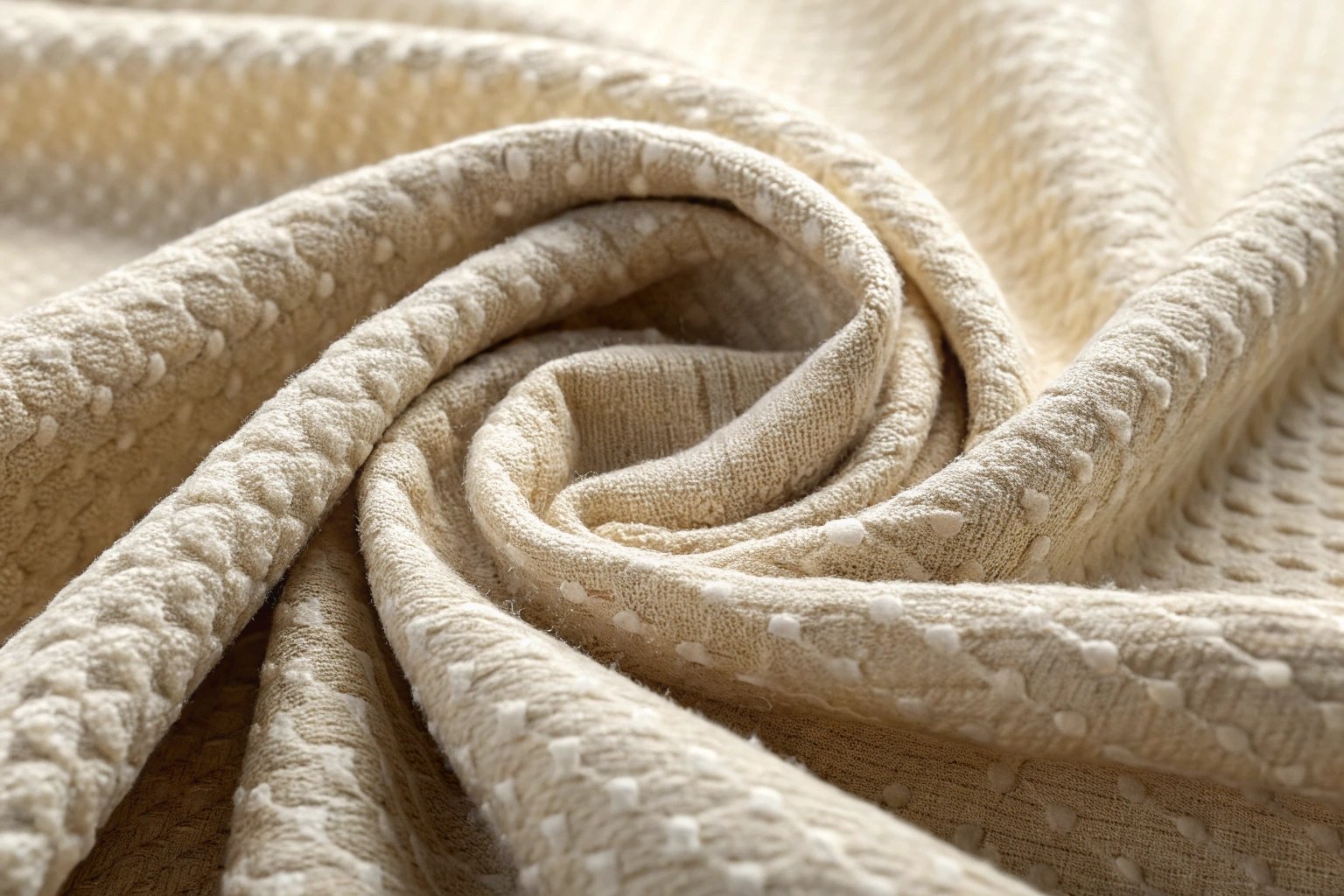
Understanding the properties and advantages of slub fabric can help both designers and consumers make informed decisions, particularly when it comes to fabric choice for garments or home décor items. This article will explore the unique qualities of slub fabric, its applications, and the key factors to consider when working with or wearing slub fabric.
What are the properties of slub fabric?
Slub fabric is distinguished by its uneven, textured surface. This irregularity is created by using slub yarns, which are spun with intentional thick and thin areas. These areas of varying thickness give slub fabric its distinctive appearance.
The properties of slub fabric include breathability, durability, and a tactile, organic texture that adds visual interest to any product.
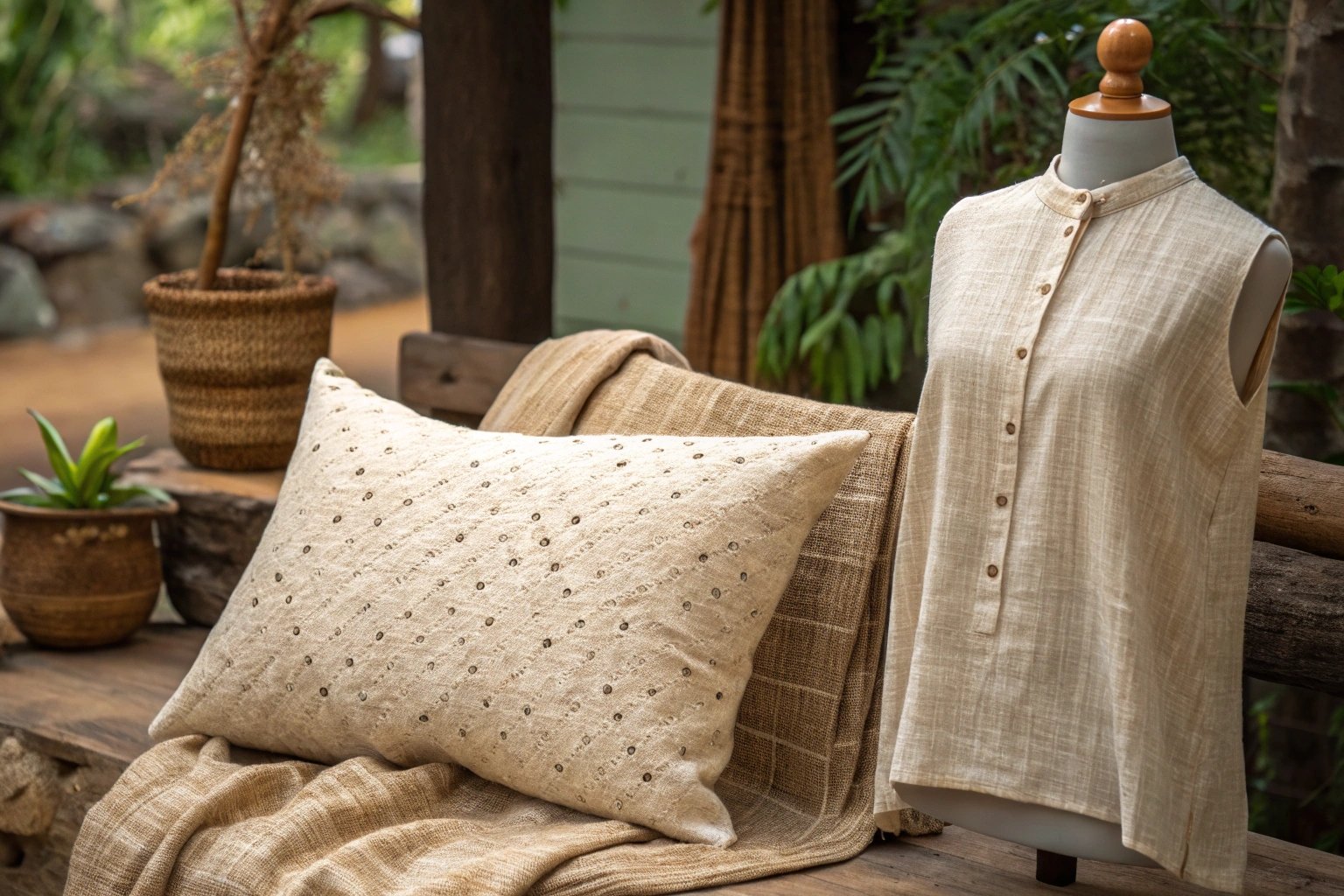
Key Characteristics of Slub Fabric
| Property | Description |
|---|---|
| Texture | Uneven, lumpy surface, often giving a hand-woven look. |
| Breathability | Highly breathable, making it suitable for warm weather. |
| Durability | Generally durable due to the nature of the yarn and weaving technique. |
| Aesthetic Appeal | Organic, rustic appearance that stands out in fashion and home décor. |
| Softness | Slightly softer than many other fabrics, though this can depend on the fiber used. |
| Eco-Friendly | Often made from natural fibers like cotton, which are biodegradable and sustainable. |
Slub fabrics are primarily made from cotton, but they can also be produced using other fibers like linen, hemp, or bamboo. The natural variations in the yarn allow for a fabric that is both aesthetically pleasing and functional, making it ideal for both casual wear and home décor products.
What is a slub fabric?
Slub fabric refers to a type of textile made using slub yarns. The yarns themselves are spun in such a way that they have uneven thicknesses, creating a fabric with visible lumps and bumps. This texture is what gives slub fabric its characteristic irregular look and feel.
Slub yarn is typically made by spinning fibers unevenly, allowing thicker spots to form in the yarn, which then get woven into the fabric.
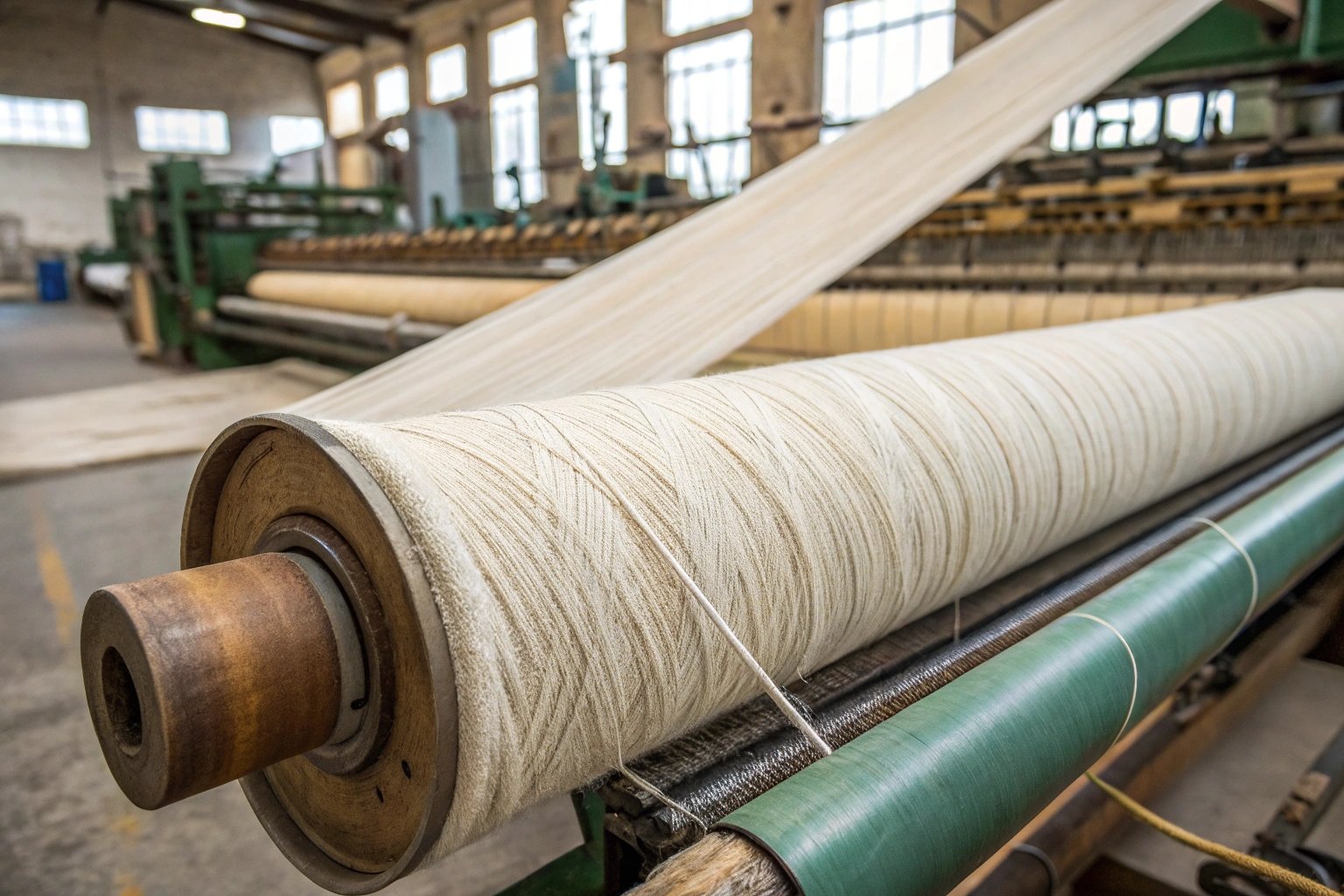
The Manufacturing Process
- Yarn Production: The process begins with slub yarns, which are spun with variations in thickness. These variations can be intentionally created to provide different textures.
- Weaving: The yarns are then woven into fabric, and the irregular thicknesses create the signature texture in the final product.
- Dyeing: Slub fabric can be dyed in various ways, from solid colors to intricate patterns. The unevenness of the yarn often adds depth to the dye, resulting in a more dynamic appearance.
Slub fabric can be produced using various fibers, and each fiber contributes its own properties to the finished fabric. Cotton slub, for example, is soft and breathable, while slub linen tends to be more structured and crisp.
How to identify slub fabric?
Identifying slub fabric is relatively easy once you know what to look for. The key feature of slub fabric is its uneven texture, which is most apparent in the yarn.
You can identify slub fabric by its bumpy, irregular surface. The texture is noticeable to the touch and visually distinctive, giving garments or home décor products a relaxed, artisanal look.
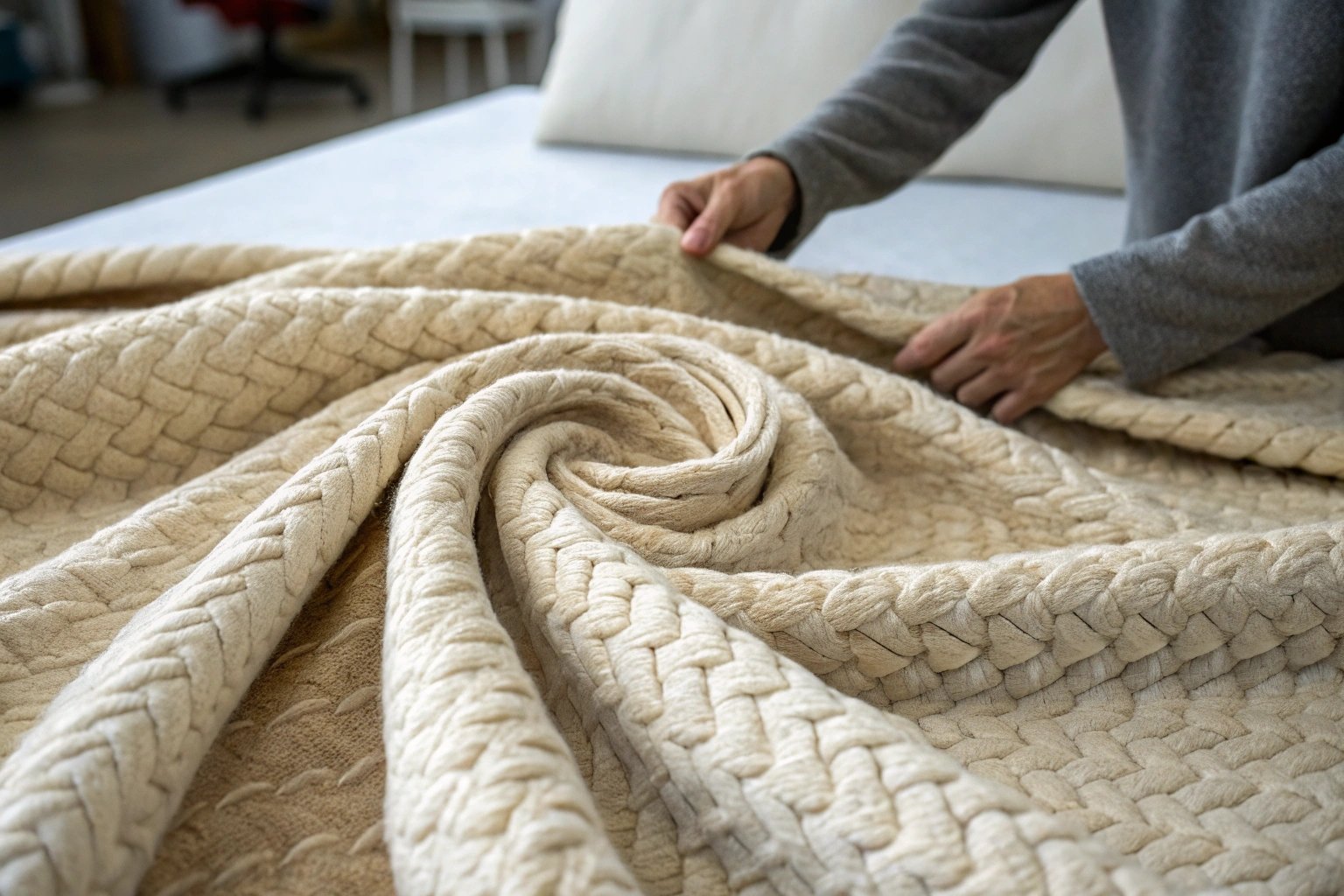
How to Spot Slub Fabric
- Irregular Texture: The most obvious characteristic of slub fabric is its texture. The fabric will have visible lumps and bumps that appear in varying sizes, creating an organic, handmade look.
- Soft to the Touch: Despite its uneven texture, slub fabric often has a soft feel, especially when made from natural fibers like cotton or linen.
- Light Play: The uneven surface causes light to reflect differently across the fabric, giving it a dynamic and textured appearance.
- Appearance of Hand-Woven Fabric: The irregularities in the yarn make slub fabric resemble hand-woven textiles, even if it’s machine-made.
If you’re unsure whether a fabric is slub, running your fingers across it will immediately reveal the distinctive texture. Additionally, a closer look at the fabric’s weave can reveal the uneven yarns, which are characteristic of slub fabric.
Can we wear slub fabric in summer?
Yes, slub fabric is an excellent choice for summer clothing. Its breathability, softness, and moisture-wicking properties make it ideal for warm weather.
Slub fabric is particularly suitable for summer wear, as it allows air to circulate more easily through its uneven structure. The texture helps to create space between the fabric and the skin, enhancing comfort in hot weather.
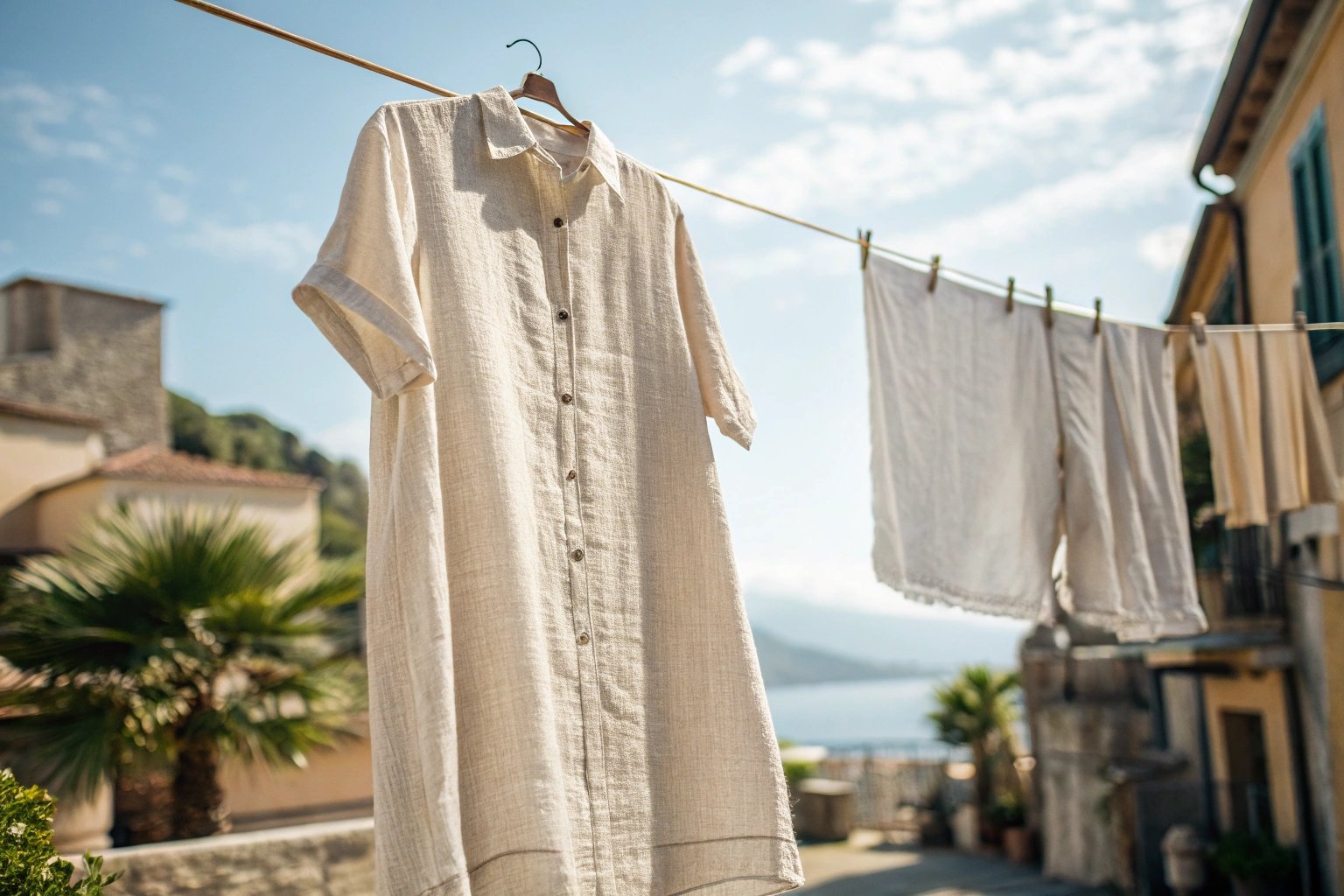
Why Slub Fabric Works for Summer
- Breathability: The uneven yarn structure of slub fabric allows for greater airflow, keeping the wearer cool in hot climates.
- Moisture-Wicking: When made from cotton or linen, slub fabric helps absorb sweat and moisture, preventing discomfort during intense heat.
- Softness: The softness of slub fabric makes it comfortable against the skin, ideal for warm-weather clothing like T-shirts, blouses, and dresses.
For summer fashion, slub fabric’s airy texture offers both visual and functional benefits. Brands that prioritize comfort and style in their collections often use slub fabric for summer wear, particularly in casual or resort collections. Its lightness and relaxed aesthetic make it a popular choice for everyday summer apparel.
Applications of Slub Fabric
Slub fabric is versatile and can be used across a range of products in both fashion and home décor. Here are some key areas where slub fabric is commonly applied:
Fashion:
- Casual Shirts and Blouses: Slub fabric’s unique texture adds an interesting element to simple garments, such as T-shirts, tunics, and casual button-down shirts.
- Dresses: Lightweight slub fabrics are ideal for creating flowy, comfortable summer dresses.
- Trousers and Shorts: Slub fabric’s breathability and texture make it a great option for relaxed summer trousers and shorts.
Home Décor:
- Curtains and Drapes: The textured nature of slub fabric creates a rich, organic look for window treatments.
- Cushions and Throws: Slub fabric adds dimension and warmth to soft furnishings like cushions, throws, and bed linens.
Eco-Friendly Products:
- Sustainable Apparel: As a fabric made from natural fibers like cotton, slub fabric is an attractive choice for eco-conscious brands aiming to provide sustainable, stylish products.
Conclusion
Slub fabric offers a unique combination of comfort, durability, and visual appeal. Its irregular texture and eco-friendly qualities make it a favorite choice for both fashion and home décor. Although it has some limitations—like potential for wrinkling and higher production costs—its versatility and sustainable appeal make it an attractive fabric choice for modern, eco-conscious consumers. Whether used for summer shirts, elegant home décor, or eco-friendly apparel, slub fabric is a key player in bringing natural beauty and comfort into design.

